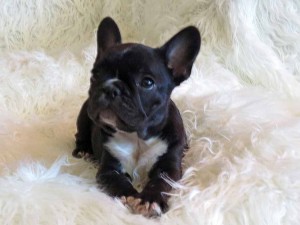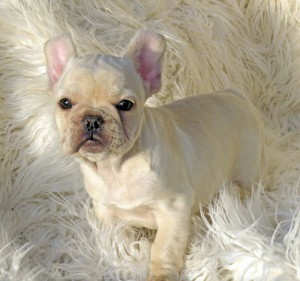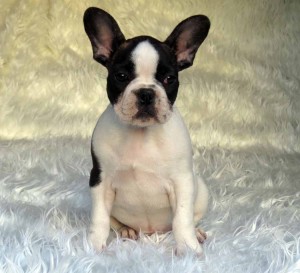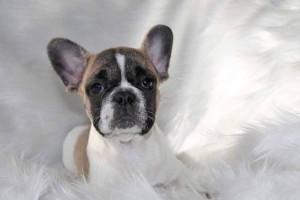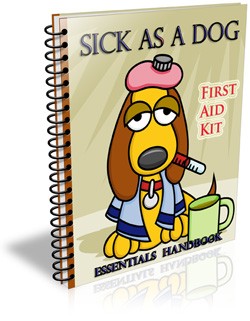Walking Your Puppy – eBook Chapter 5
Walking Your Puppy
Training your puppy to walk on a leash can be a challenging task. It will be in the dog’s nature to wander off and inspect everything that crosses their path, but this instinctual behavior does not lead to a pleasant walk for you. As the “alpha” you must help the dog strike a balance between the dog’s natural instinct to explore and walking on leash in a controlled manner.
The first thing that must be done is to purchase a leash with an appropriate length for the size and weight of your dog along with a nice heavy duty collar. Some people opt to use a harness while the puppy is still small to better control the dog’s instinct. The use of the leash and collar or harness will allow you to best control your dog in a safe and effective way while remaining humane and loving. Choker collars, however, are NOT recommended as they are likely to harm the dog.
One important step to consider is making sure your dog does his ‘number two’ business before you leave home for your walk. If the dog learns that the walk is time to use the potty, you will always be stuck carrying bags to clean up after your dog. You should teach the puppy to potty in a certain area of the yard. To be safe, always carry a bag with you on the walk, but not having to use it makes for a more enjoyable walk for you.
Training your dog to walk on leash can be very time consuming and will require you to be patient. Don’t expect your first walk to be long in distance, as it is a training session that requires a lot of stopping and starting to show the dog how things must be done.
Training Your Dog to Walk On a Leash
- Select a side of your body you will want the puppy to walk on, and demand that the puppy always walk on this side. Keep in mind that this behavior will eventually stick with your puppy, so make sure you are comfortable with the position of the leash and your arms.
- Take a few steps, but stop them abruptly when they begin to pull on the leash. Make them sit and reward them with praise and restart.
- Every time the puppy pulls on the leash, repeat the above step. It is quite likely that you won’t get very far and will have to stop and start many times.
- You can allow your dog to veer off of the beaten path, but only if they do not pull the leash or attempt to smell things. Your puppy may wish to ‘mark’ with their urine along the walk. This behavior is normal and acceptable, so long as it does not become constant.
- When the puppy stays on pace with your walking speed and keeps to your side praise them with a treat.
- Along your walk you may come across other people or dogs and your puppy might become anxious, pull or bark. Reassure your puppy that he is okay with affection, but if they get too anxious or excited have them sit and wait for the people to pass by.
- Children are usually always interested in puppies and it is in your best interest, as well as your dog’s best interest to teach them how to properly interact with children. You must always be in control of this situation. When allowing others to pet your dog, make the dog sit and behave while they do it, as this will reduce the possibility of the interaction getting out of control.
- Walk your dog at least two times per day or more while the puppy is still young. This acclimates the dog to walking with you on the leash and helps them expel unused energy in a healthy way.
As the dog grows up you may consider allowing them to walk off leash. If you choose to do this, use a tremendous amount of caution, especially when there are cars present. Even the most well behaved and trained dogs can be unpredictable, and you never know when something may cross their path and derail their current behavior. Because of this, walking a dog off leash in an unsafe or unsecured area is generally not recommended.
…Stay tuned for chapter 6 “Barking and Your Puppy”
How To Train Your Puppy – eBook Chapter 4
Clicker Training Your Puppy
Training your new dog with a clicker is hands down the easiest and most reliable way to teach them appropriate behavior. The reasons that this method works so well is due to its focus on positive force free reinforcement rather than punishment. The task of clicker training is very simple, as it requires using a simple clicking sound when the puppy behaves the right way, followed by some type of treat or reward.
Clicker training has been used for many years on a widespread list of animals including, but not limited to birds, sea animals such as whales and sea lions, bears, jungle cats, and domestic dogs and cats. For all of the animals being trained with a clicker, the process remains constant. A verbal command is given, followed by a click when the action is performed. Eventually, the click is no longer required, as the animal will simply perform the requested task. This is referred to as conditioning. You are conditioning the dog to do the things you want him to do, but avoid negative unwanted behaviors. The clicker is simply a means to help train the dog; it doesn’t perform the training on it’s own. However, it should be noted that using a clicker over other forms of traditional animal training has been proven to reduce the amount of time necessary to train the animal by about 30%.
As far as cost and acquisition is concerned, a clicker can be purchased at any pet store for a few dollars each. It is recommended that you purchase a few clickers and keep them on hand at all times during the training process. You should be prepared to teach every member of your family how to use the clicker to teach and reward positive behavior to the dog. In addition to the clicker, remember to carry a supply of treats to be given during the clicker training. The treats will help speed up the clicker training process.
This type of training can be used to teach and reward all kinds of behavior. The following is an example of how to teach your puppy to sit using the clicker training method. Teaching a dog to sit is the backbone of helping your dog understand who is in charge and how they should behave to get your attention.
Training Your Puppy To Sit With A Clicker:
- Select a cue word or phrase along with a hand motion that will go along with it. ‘SIT’ is always a good choice, for obvious reasons. Your hand motion could be an open hand with your palm facing down, or a pointer finger pointing down at the puppy.
- Give the dog the command and the hand motion at the same time. This will need to be done multiple times until the puppy actually sits down. You should be prepared to gently and calmly assist your puppy by placing his bottom on the ground.
- Once the dog sits, press the clicker and then follow the sound immediately with a food treat. The sound of the clicker alerts the puppy that he has done the correct thing. The dog will hear the cue, sit down, hear the click and receive a treat.
- Repeat this training with the dog regularly for several weeks. The puppy will not actually understand the command right off the bat and will need this done repeatedly until the connection with the verbal cue and the action is made.
- After many days of clicker training have been performed, don’t always reward the dog with the food treat. In exchange for the food treat, give the dog verbal praise and positive attention. The dog will need to learn that he must always perform the requested behaviors, even in the absence of food.
- After the conditioning has set in you will be able to command the behaviors and get the dog to perform them without the clicker OR the food treats. As long as your visual cues remain consistent, the puppy will learn very quickly to respond to your visual cue, even in the absence of the verbal cue.
Clicker training can be used to teach your dog all kinds of behavior in addition to the simple ‘SIT’ command. You can teach your puppy to lie down, go into the crate, come when called, calm down, and even to heel when walking with the use of a clicker. All of your training needs can be accomplished without ever resorting to punishment, unkind physical force or any other demoralizing behavior. When your dog behaves well he will be rewarded with affection and a food treat, and when he does not behave well, simply ignore the dog all together and the behaviors will soon disappear.
Puppies are like sponges in that you can pretty much train them to do anything you want. You can train your dog to ring a bell to notify you that they need to go potty and even train them to sit next to their full food bowl until you give them verbal permission to start eating. Always remember that the more time you spend training your puppy, the more they will enjoy learning these new things in order to please you.
A well behaved dog is a happy dog! Get out there and start clicker training today!
…Stay tuned for chapter 5 “Walking Your Puppy”
How To Train Your Puppy – eBook Chapter 3
Kennel Training Your Puppy
As you begin the task of potty training your pup, you will need to train him to be in a crate or kennel. There are plenty of people who believe that a crate should be used to punish a misbehaved dog and this is simply untrue. Kennels should be viewed as a very own space for your puppy. The pup will grow to love the crate and spend time in it even when the door is wide open.
Training a dog to stay in a crate when you are not home or when you need to leave the dog unattended prevents a large amount of stress for you as well as the dog. As we mentioned earlier in this book, dogs are traditionally dwellers. They are comforted by the confinement of a small space and tend to seek it out. If your kennel is made of wire, it is recommended to cover it over with a blanket as that gives the dog the feel of being “covered up.” The purpose of the kennel is to provide comfort to the dog, while giving you an insurance policy that the dog won’t be getting into trouble while they are confined.
Crate training your puppy is also a great step towards avoiding negative behaviors such as digging or scavenging in garbage cans, chewing on non-approved items and climbing. It also prevents the dog from being able to hurt themselves through eating toxic non-food items and becoming trapped in a small dangerous place. Puppies are especially susceptible to injury and death due to their curiosity, small size and lack of depth perception. Crating a puppy is an important safety measure that must be taken.
The two types of crates that are available today are wire mesh and plastic. Both of these are great options. If you ever plan to travel with your puppy by air, you should consider purchasing an airplane approved crate, which is generally plastic. The wire mesh crates can be broken down for easy cleaning and moving.
When you first bring your puppy home he might not want to go into the crate. In order to bypass this snafu, you must make the crate appealing to the puppy by placing blankets, toys and treats inside. Using a simple command such as “inside” or “kennel up” repeatedly until the puppy walks into the crate. Once the puppy has gone inside the crate, you need to reward him with praise and treats.
It is perfectly normal for your puppy to cry and whine a bit once they get inside the crate. This isn’t because they want out of the crate, it’s because they want you inside with them. Dogs and puppies especially crave your constant attention, but it is extremely important that they learn to be comfortable by themselves in their own space. It is recommended that you go over and speak softly to comfort them, but don’t sit nervously beside the crate or let them out of the crate when they start whining. Doing that will only encourage the bad behavior and the dog ends up training you instead of the other way around.
A lot of people will choose to put a dog bed or blanket inside the crate to make it more comfortable, especially if you plan to crate your dog for a few hours at a time. As the puppy gets older, he may not require the bed or blanket, especially if you live in a warm climate.
One of the best ways to make sure your puppy is comfortable is to keep them near you as much as possible. The crate should be placed in an area of the home that is frequented by all members of the family. The family room is generally a good choice to place the crate during the day. Having your crate in a high traffic area will encourage the puppy to sit in there while the rest of the family is watching TV or having a meal. If having the dog crate in the living room isn’t aesthetically pleasing to you, consider placing a piece of wood over the top and cover it with a tablecloth.
Puppies should NEVER be left in the crate for more than eight consecutive hours. If this means that you need to take a break from work and come home to relieve the puppy, you must do this. It is extremely important to think about the time commitment involved in training before bringing the dog into your home to begin with. When puppies are put in a crate, they should go in happily, knowing that they are not in trouble and you will be back shortly to play with him.
…Stay tuned for chapter 4 “Clicker-Training Your Puppy”
How To Train Your Puppy – eBook Chapter 2
Housebreaking Your Puppy
If you choose to do nothing else in training your dog…housebreaking is THE MOST IMPORTANT ASPECT OF TRAINING AND IT MUST BE DONE! Dogs aren’t able to tell the difference between the foot of your bed and the back yard when it comes to using the bathroom. According to an untrained dog, there aren’t many places that they wouldn’t want to use for a bathroom. Potty training your pup should be relatively simple if you are willing to follow the steps outlined in this eBook.
As the potty training begins, you will probably need to distance yourself from your pup as being the cuddly human they love so much. In order to successfully housebreak a puppy, the dog must be confined to a small area in the home. Please don’t confuse small area as your lap on the couch! This might seem like a mean thing to do, but it’s important to realize that dogs were once den dwellers. They quite enjoy being in a crate or dog house as it makes them feel secure (so long as you get them used to the confinement as a young puppy.) Dogs are also imprinted to want to be praised, so by training them you will be able to give them the praise that they desperately want.
Puppy Housebreaking Step-by-Step
- Locate a crate or kennel for your new puppy. When you are not actively engaged with the dog through walking or playing they should be confined to this crate. The confinement includes overnight and when the puppy is home alone. The puppy should learn not to expect or to be give free run in your home until the dog is completely trained because it gives them a false sense of dominance and will ultimately make it much harder to train the dog. Also, most dogs will never eliminate in their kennels, so you are reducing the risk of an accident in the house. The crate must be large enough for the dog to sit in, stand up in, turn around in, and lay down in. A crate that is too large for your dog will not make them feel secure and a crate that is too small will be uncomfortable. Since the puppy will grow into a dog, you will eventually need to invest in a larger crate. If you maintain your dogs crate, selling it online should be no problem.
- You need to plan to have someone around the puppy most of the time. Do not bring your puppy home the day before you leave on a vacation. The best time to bring a new puppy into your home is on a Friday evening so that you have two full days to spend in direct contact with the dog. This will help jump-start your housebreaking efforts.
- Purchase some training supplies. You need to procure lots of treats for potty and other behavioral training. You should have a wide variety of treats that are safe for puppies to chew. You can also purchase regular size treats and cut them up into small training rewards. There are treat bags you can get that clip onto your belt or on the side of your pocket, but a sandwich bag will work just as well. Don’t leave the treats loose in your pocket, because the dog will smell them and won’t ever leave you alone.
- When it comes to potty training you will need to use a stopwatch or a timer. If you own a small dog or live in an apartment, you may opt to use pee pee pads. If you are opposed to the pee pee pads, there are grass beds available as well. These are good choices if you live in an apartment or training your dog to relieve on the balcony. If your puppy will one day grow up to be a large dog, the pee pee pads or grass bed is not a viable solution.
- Come up with a schedule and STICK TO IT! The general rule states that puppies can hold their urine for one hour for every month of age plus one hour. For example, if your dog is two months old, he should be able to hold it for three hours. However, this doesn’t mean that you should wait three hours before taking them out. You should start feeding and watering the puppy at the same time every day. Your dog will let you know which it prefers. Every time you feed the puppy, place the food where the puppy can access it and leave it there for fifteen minutes to one half hour. After that the food should be taken away until the next feeding. This prevents your puppy from getting off schedule with feedings and elimination.
- After your puppy eats, you must take him immediately to the place in the yard where you wish it to potty. YOU must choose the area of your lawn that you want the puppy to associate as the toilet and place him in that area. Walk the puppy around the designated potty area and use a verbal cue that you will remember like “Go Potty” or “Get Busy.” These cues will become clear to the puppy and they will react to them throughout their life. Make sure everyone in your household who will be taking out the puppy for elimination know to use the same verbal cue.
- Keep using your verbal cues while the puppy goes potty. Once they are done praise him with affection and a small treat. If they don’t eliminate within five minutes take the dog back inside and put them in their crate. Wait another fifteen minutes and try the process again until you are successful.
- Throughout the day the potty process needs to be repeated. Once an hour is best even if the puppy has not consumed any food or water. Each time the puppy eliminates you must praise him with affection and a treat. Also, the puppy should be allowed some supervised play time once brought back in the house.
- At bedtime the puppy must be kept in the kennel. We know that it’s hard to resist cuddling in bed with your sweet puppy, but this absolutely must not be done. More often than not, you will wake up with puppy urine soaked sheets. You can, however, move the kennel into your bedroom at night to satisfy both you and the puppy’s desire to be near each other. Do NOT feed or water puppy near bedtime and try for a successful elimination before placing the pup in the crate for the night. When the puppy is very small, it may be necessary to set an alarm to awake you at least once per night to take the puppy out for elimination.
This is a solid housebreaking plan that should work for anyone when implemented properly. You should be able to train your puppy within just a few days of this method. If you are still having problems you may need to adjust your schedule so that it better suits the needs of your puppy. Remember that even the best trained dogs have accidents when they are young, so patience is the most important tool at your disposal. Keep a hefty supply of carpet cleaner on hand to take care of any accidents. Also, it is very important not to scold or yell at your puppy for accidents. Ultimately, all your puppy wants is your love and approval. The more positive reinforcement you can give them for doing things the way you want them to be done, the more the puppy will perform the rewarded behaviors in a positive manner.
…Stay tuned for chapter 3 “Kennel Training Your Puppy”
How To Train Your Puppy – Ebook Chapter 1
You and Your Puppy
Bringing home your new puppy is an amazing experience you won’t soon forget. You probably went to a breeder or perhaps walked past a pet shop window and couldn’t resist walking in to take a look around. Before you knew what happened, you were staring into those big beautiful eyes looking up at you from a giant ball of fur and your heart instantly started to melt. The game was over and you were headed straight home with you new bundle of fluff in your arms. If you are like most new dog owners, you probably have illusions of playing a game of tug-o-war in the yard, watching your dog run near the lake, and of cuddling up together on cold nights.
What you most certainly failed to understand was that those behaviors you were dreaming about for your new little puppy are not going to come naturally. In fact, the behaviors that your new puppy has in mind sound more like chewing up your favorite pair of dress shoes, barking at everything that moves (and doesn’t move), and messing in the house whenever and wherever they feel like they want to go. These natural behaviors may seem manageable and even cute at first, but if left unattended your cute misbehaved little puppy will turn into a very bad (and not so cute) adult dog.
The problem that you will run into with puppies that are not trained is that they inevitably will grow up to be disobedient and untrained adult dogs. Untrained dogs are quite obnoxious. The cute puppy yipping escalates into loud incessant barking that can disrupt the neighborhood at odd hours. The little chew marks in your shoes turn into expensive damage to your home and furniture, and the cute little puppy poops will grow in size as the dog grows in size.
Untrained dogs can also have the potential to be very dangerous. It will always be the instinct of your dog to defend themselves or their pack if they feel threatened. Most dogs resort to biting to accomplish this self defense goal. It is critical that you teach your dog not to use their teeth as a form of communication to help prevent any injuries on you or anyone else when playing with or handling your dog. While we all expect our dog to attempt to protect us in an emergency situation involving imminent danger, it is imperative that you train your dog to be non-aggressive and non-confrontational. Dogs that are left untrained and have a habitual record of aggressiveness are at a high risk of being euthanized.
Another extremely important reason for training your dog is that it keeps the chances of your dog winding up homeless in a shelter down considerably. People will grow extremely tired dealing with untrained dogs, and at some point they will reach a breaking point with the animal. It’s no secret that a dog shelter is no place for a dog to be loved and feel happy and it is also sometimes a death sentence for the animal. Part of loving your new puppy is training. It gives your dog the important skills that they need to be able to live happily ever after with you in your home.
Dogs have been domesticated around the world for more the 15,000 years. Due to this long history of human companionship and dogs, your new puppy has been imprinted upon to want to be around you. Dogs are also not realistically able to live by themselves in the wild. They are not adapted to living in the exposed elements of nature and foraging for food. The puppy you bring home today wants to be with you and also wants to please you. The desire to please their master is the main reason that domesticated dogs are so easy to train and quick to learn.
The dogs that we have as pets have what is called social intelligence. This enables them to read your visual and verbal cues and adapt their behavior to it. While each dog will train at a different pace and through different ways, nearly all domestic dogs are trainable.
Just like humans, dogs go through a series of cognitive development. Puppies, like babies, learn to interact with the world around them at around eight weeks of age. They will also mimic behaviors early in life, so if you have one well behaved dog your puppy can learn from it.
If this is your only pet. don’t worry too much. Dogs learn an amazing amount about their environments and what they should and shouldn’t do just by watching you and learning from it. Just like parenting, dog training is something that often happens while you are paying attention to other things. So, those first few months that you have a puppy are an incredibly important time to really focus on training your dog. It’s no secret that training a dog is a lot of work, but in the end it is a necessary task that you must accomplish in order to guarantee that the life you live with your new puppy is full of happiness, joy and success for both you and your dog!
